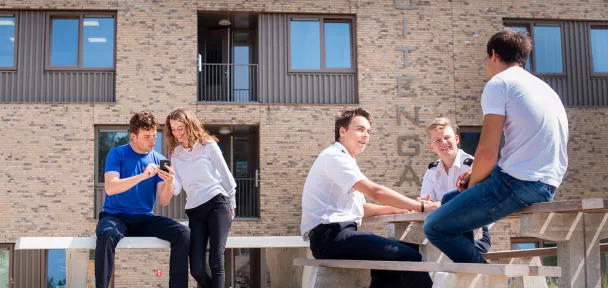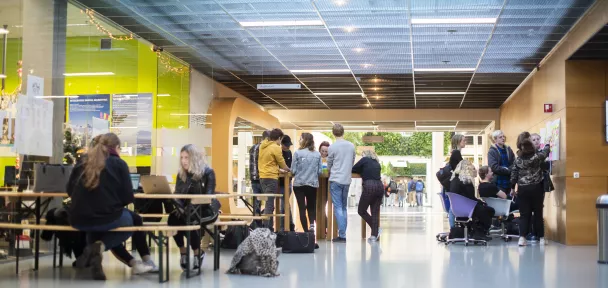
Dutch, English, Polish, Turkish, Arabic, Frisian, French and German. Count the number of children in your class and you’ll find the number of different native languages quickly mounts up to almost the same. And yet very little is done with the wealth of languages we hear in education, concludes Janke Singelsma, project leader for the professorship Multilingualism & Literacy at NHL Stenden University of Applied Sciences. Five tips for making language a topic of conversation.
1. See multilingualism as enriching
“Dutch is traditionally the working language in the classroom, which means all the other native languages automatically get overlooked. In fact, many teachers actually forget to pay any attention at all to the wealth of languages there is. That’s such a shame because the diversity of languages can be so enriching. By talking about different languages, you raise the appreciation of them and help create more unity in the group. Ask children to share how their language sounds, how it’s written and what the characters look like. You can only actually do something with multilingualism if you can see and recognise it as enriching.”
2. Show interest
“It’s all about showing interest for other languages. Whether it’s Frisian, English, Turkish or Arabic, show that you as a teacher are interested in new languages. By asking children about their language, they feel seen. After all, your mother tongue is a part of who you are. Showing interest in someone’s language means you’re showing interest in their story.”
3. Integrate multilingualism into your lessons
“Many schools opt to hold language days where, for instance, on Mondays the working language is Dutch, Tuesdays is Frisian and Wednesdays is English. But that means you forget all the other languages in your classroom. A better idea would be to integrate all the different languages playfully into your lessons. Get someone to count in Turkish and then try to repeat it as a class. Or sing songs from Poland or Afghanistan in the music lesson. In short, seize every opportunity you can to make language a part of your lessons.”
4. Involve parents and grandparents with language
“In many cases, the parents or grandparents still speak the mother language fluently. It would be a waste not to use this resource. Invite parents or grandparents to the school to represent their language in a special language project. I know from my own experience that this helps to make it easier for many foreign parents and grandparents to come to school. And it’s a great way of getting to know each other.”
5. Surprise the children busing their mother language
“Everyone knows a few words in another language. The whole of the Netherlands can say ‘Oant moarn!’ for instance, since Piet Paulusma introduced the Frisian way of saying goodbye. What could be nicer than welcoming everyone into the classroom at the start of the day in their own language? Or calling out goodbye on the school yard in the mother tongue. It takes just a little effort and has a great effect.”


